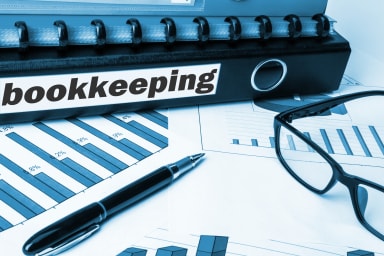It’s OK if you’re a little nervous and unsure about taking the leap and starting a freelance business. All freelancers feel the same when starting out.
But you know you have to, it’s your entrepreneurial mindset, that longing for the day when you’ll be your own boss, doing what you love, and doing it your way.
And it’s because of those feelings you’ll succeed.
All you need at the beginning is a little guidance on which steps to take first.
Steps that will help you leap and land you firmly on your feet in the world of freelancing.
1. Know Your Why – Know Your Way
Before you begin your journey, define your goals and fully understand what you want from your business.
Ask yourself the following questions:
- Why am I doing this? – (To be my own boss – set my own hours – spend more time with my family?)
- What do I want out of it? – (An extra side income or a full-time profession?)
- Where do I want to end up? – (To stay as a freelancer or to turn it into a business with employees?)
- What am I willing to put into it? – (How many hours a day, days a week can I devote to it, am I willing to make sacrifices?)
Be completely honest with yourself because if you make statements that you can’t commit to, they’ll only serve as reminders of failure, and they erode self-belief.
Next, set your goals.
Use smart goals; these are specific, measurable, attainable, relevant, and time-based.
Have short-term (this week/month/quarterly), long-term (annually), and ongoing (something you have to do consistently).
Set your goals the night before and start each day with a plan. Review your results daily, weekly, monthly and quarterly. This way, you’ll see where you’re succeeding and where you`re not, then you can adjust accordingly.
Now you can begin your journey:
2. Choose A Profitable Niche
You might be saying, “but I know what I want to freelance in,” but that’s not your niche.
Every market has numerous niches, and to earn an income that’ll support you, it’s crucial to pick a profitable one.
Let’s say you’re a freelance writer. People are willing to charge less than you due to their geographical location and lower living costs. If you advertise solely on the same platforms (for example, Fiverr – Upwork) as they do, you’ll either work for peanuts or lose heart and give up.
But the writing world has numerous niches (Ghost-writing, white-papers, blog-posts, long-form content, etc.) And the most profitable ones are hiring the best writers, not the cheapest.
Choose three profitable niches within your market. The trick is finding the sweet spot (niches that pay well and interest you); that way, you’ll earn what you need, enjoy doing it, and avoid competing on price.
3. Get ready for business
Now you’re going freelance; you have to decide how you’ll operate your business. You have three choices, which you choose depends on where you`re going.
- Sole proprietorship – (Simple and cheap to start, low accountancy fees, but you’re financially liable for the business)
- Limited liability company – (More complicated and expensive to start, higher accountancy fees, but you’re not liable for the business. This can be formed on your own, through an attorney or service including Northwest LLC alternatives)
- Corporation – (Generally not chosen by freelancers due to the complexity, high costs, and unnecessary benefits)
If you plan on staying as an independent freelance writer, then registering as a sole proprietor would be the least expensive and most straight forward option. However, many freelancers choose a limited liability company as they get the benefits of not being personally liable without the complications of a corporation.
4. Design a business logo
Just because you’re new doesn’t mean you have to look it; actually, it’s because of this that you should be considering branding, first up, a logo.
Why do you need one?
If you don’t have a website or a social media account, you’ll be contacting potential employers by email.
And you can give your account a professional look by using a signature. On your email platform there`ll be an option where you can add a logo, a personal photo, description, and your contact details. By doing so, you’re far more likely to grab the intended reader’s attention.
You can create a logo in numerous ways, and it isn’t expensive if you use an online logo maker. Once you start making some money you can go for a more expensive logo, but while you are starting out a logo maker will do the job.
Although a logo is important don’t over think it. Some people get stuck on this step for weeks. There is really no need. Design a logo that looks the part and that your happy enough with and move on.
5. Create a website and social profiles
While a signature email will help you find gigs, at some point, you’re going to need a website and a social media account.
Both provide a point of contact for future customers and a place to showcase your past projects and clients. Most importantly, you can advertise yourself in a way that sets you apart from other freelancers in your market.
A professional looking and visually appealing website shows potential clients that you’re a legitimate business and someone they can trust. While listing on a platform like LinkedIn is an excellent way of getting known within your market place and expanding your employment network.
Use these to advertise your achievements, gain likes and followers, and before long, you’ll be turning the work away.
6. Set your pricing – but not in stone
Before you can pitch for a gig, you have to determine your pricing strategy.
You can use:
- Hourly – (Find the going rate and start there)
- Flat Fee – (A set amount charged that does not change according to the amount of work done)
- Project Quotes – (Individual quotes determined by individual projects)
You can find out what freelancers charge in your market by researching online, asking other freelancers on social media groups, or on sites like Glassdoor and Payscale.
But remember, you’re the new kid on the block, so be flexible at this early stage and consider gigs that are below your desired price point because those who learn how to swim are those who get their feet wet, and one gig often leads to another.
And a great way of getting gigs is by looking the part:
7. Find customers and build your client base
Now you’ve found profitable niches, designed a logo, built your website and social profiles, and set your price structure it’s time to find customers and start building your client base.
But you’re new to the game, so what’s your approach?
You may already know some of your future clients, or you’re entirely in the dark, at this early stage, a fishing net approach, rather than a fishing hook, might be your best bet. The goal is to land your first gig and get in the game.
Your client’s location will depend on your market. You can contact them directly via their website, social media platforms or email. Another option is to register yourself on a paid membership platform.
Paid platforms provide a service for a fee, so unlike their free counterparts, it’s a place where professionals come together.
Once you’re working, you can hone your target client list, only choosing reliable ones that provide regular well-paid work.
Still not sure if you’re ready to freelance? Our infographic can help you prepare.
By: Samantha Acuna
Samantha Acuna is a writer based in San Francisco, CA. Her work has been featured in The Huffington Post, Entrepreneur.com, and Yahoo Small Business.
Compare LLC Packages
Identify the package that’s right for your business and then get started
starter
$0
DOES NOT RENEW*
plus state filing fees
File in 2 to 3 weeks **
Top Features
- Our Standard Filing Speed
- Worry-Free Compliance*
- 100% Accuracy Guarantee
pro
$199
BILLED ANNUALLY
plus state filing fees
File in 1 to 5 days **
Top Features
- Our Fastest Filing Speed
- Employer ID Number (EIN)
- Operating Agreement
premium
$349
BILLED ANNUALLY
plus state filing fees
File in 1 to 5 days **
Top Features
- Business Documents
- Domain Name & Email Address
- Business Website Builder
*SPECIAL OFFER – get Starter for $0 plus state fees. Includes 1 optional free year of Worry-Free Compliance that renews at $199/yr.
**These filing times are averages and include our processing times and Secretary of State turnaround times which vary by state.







